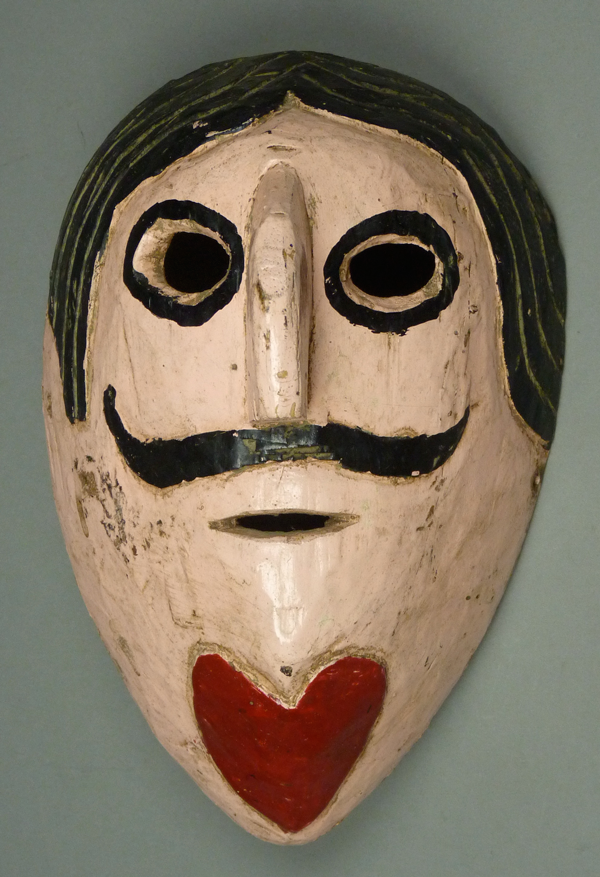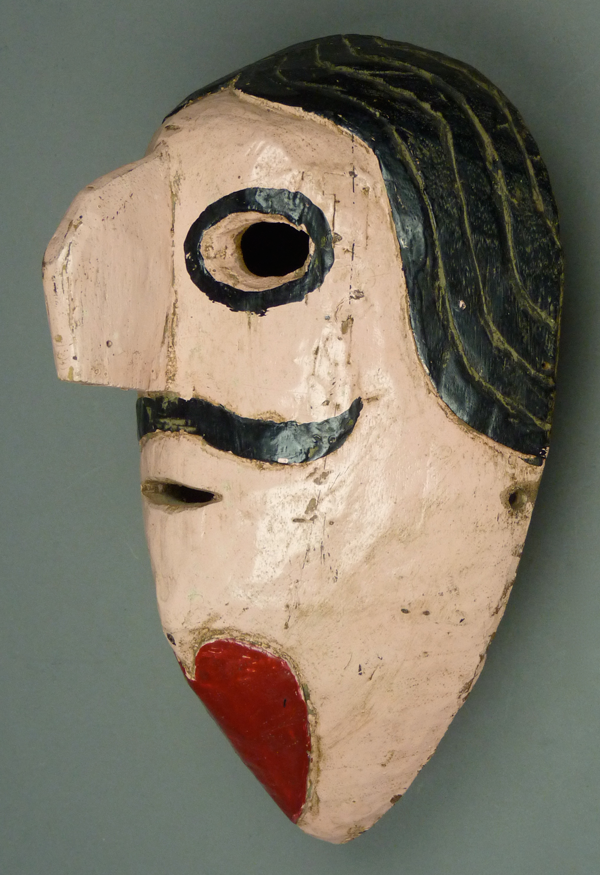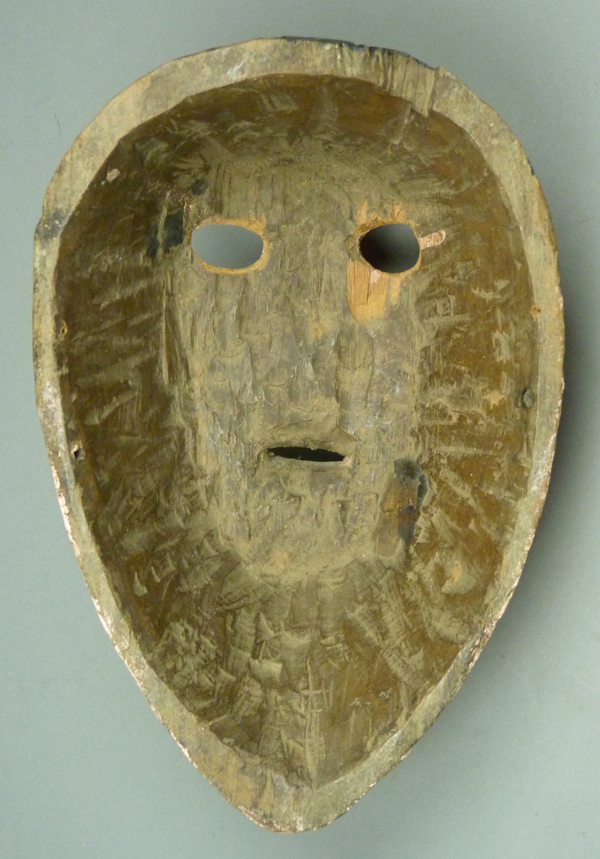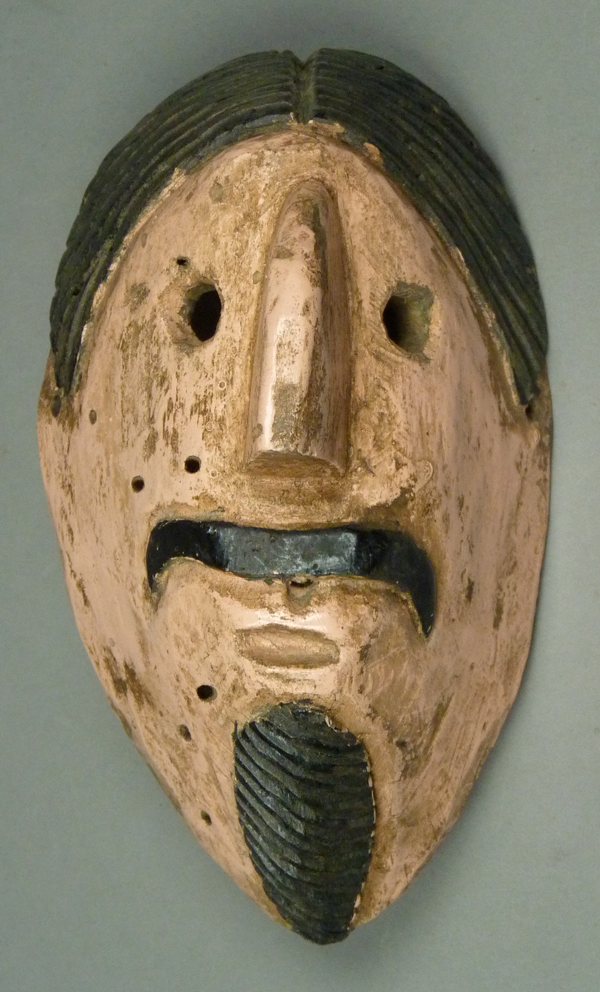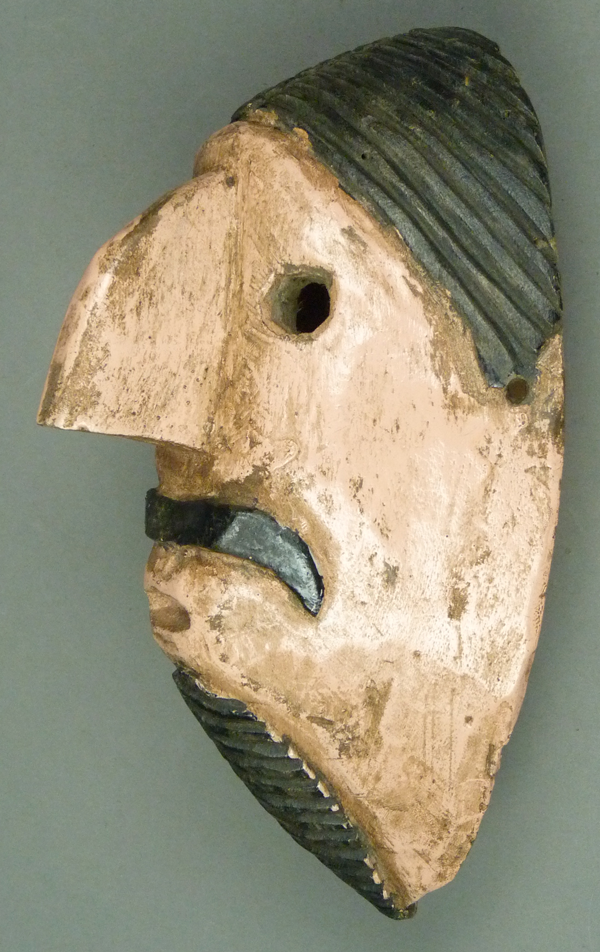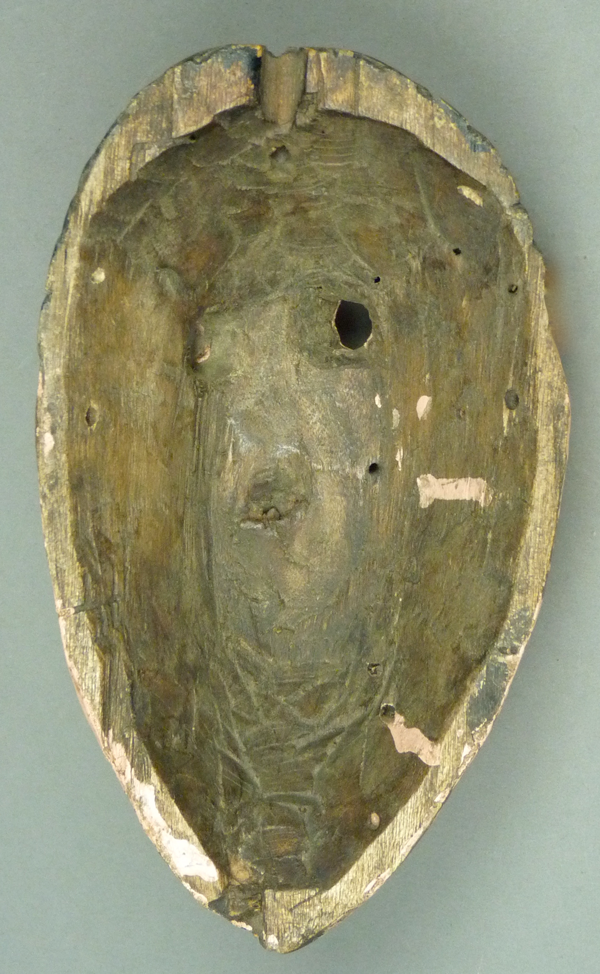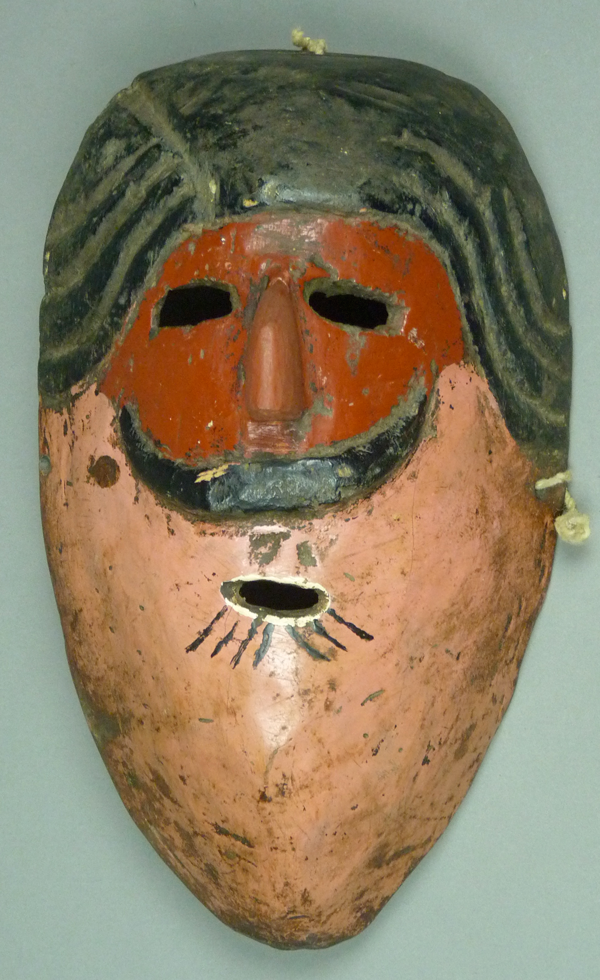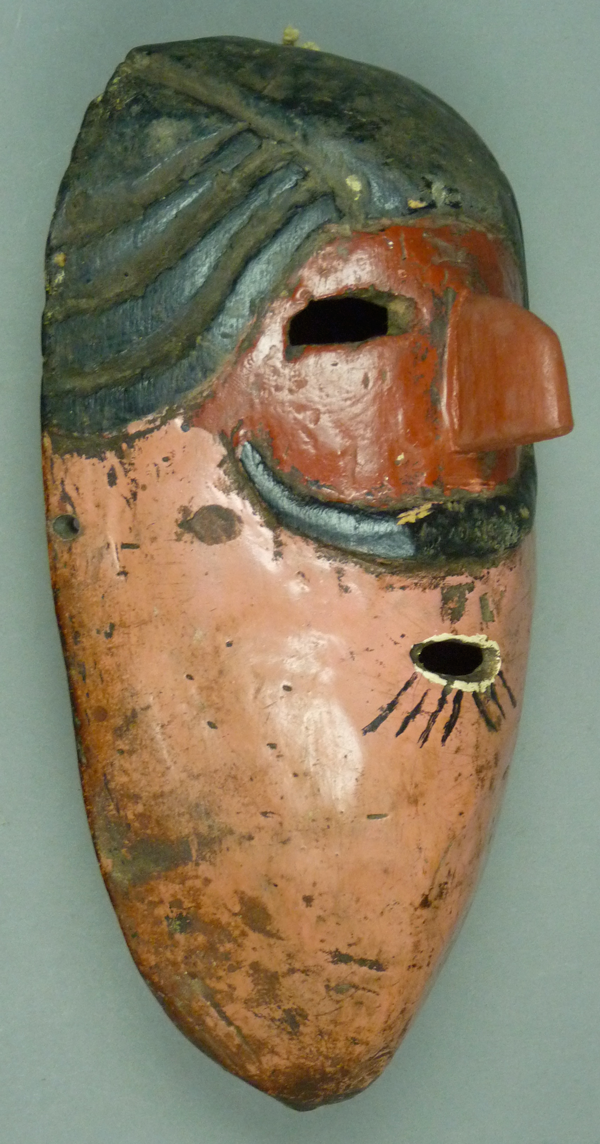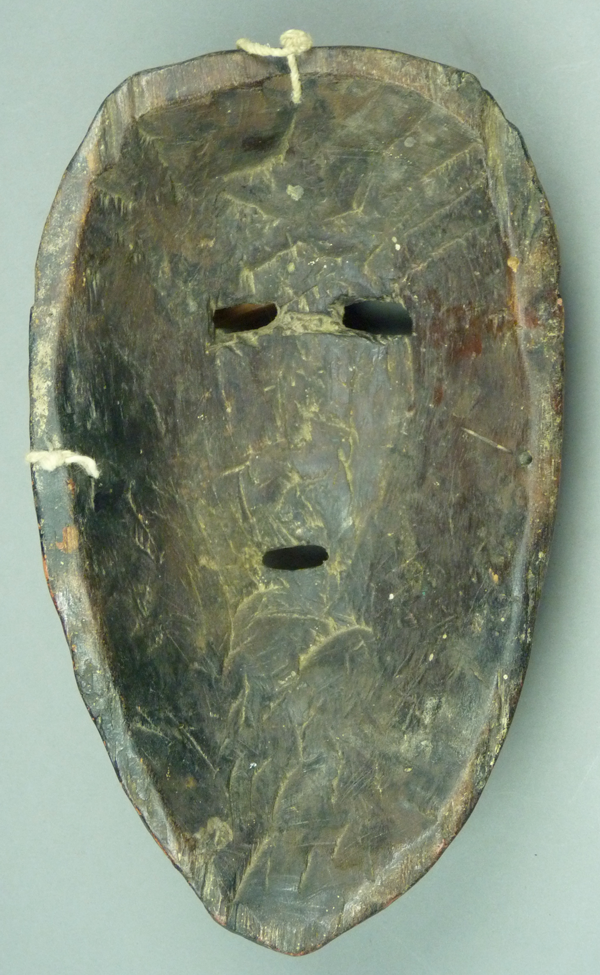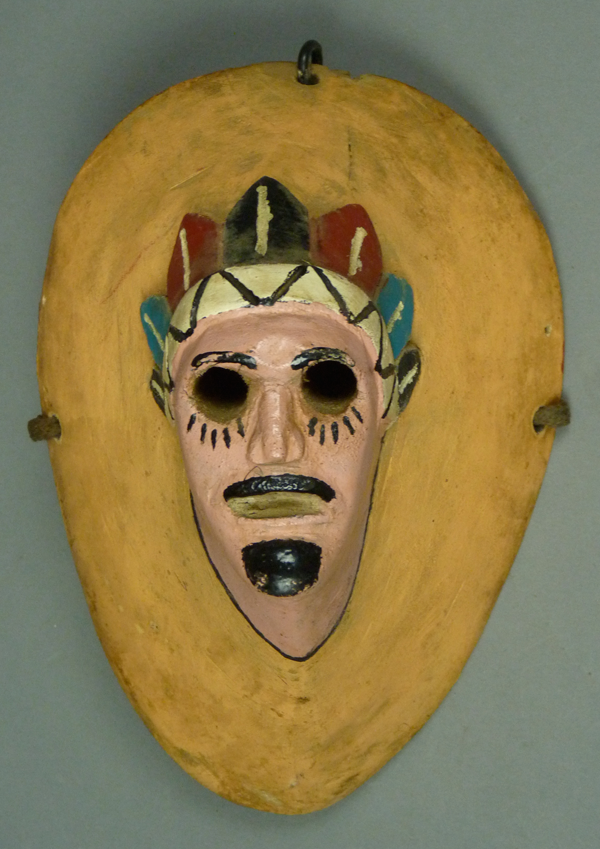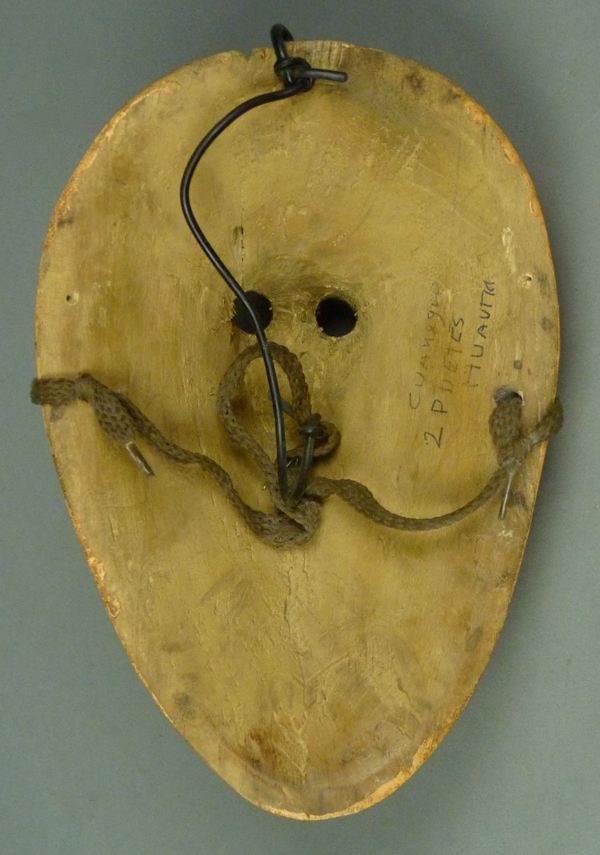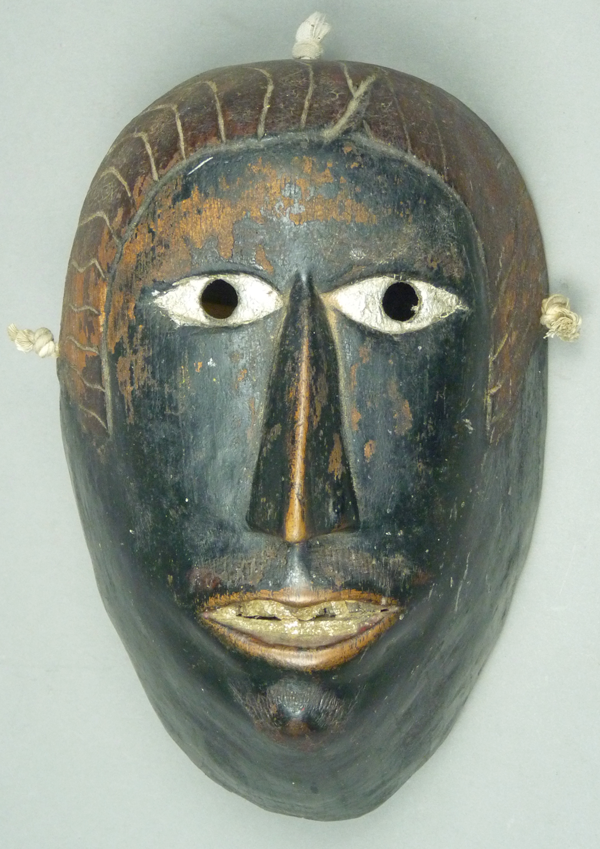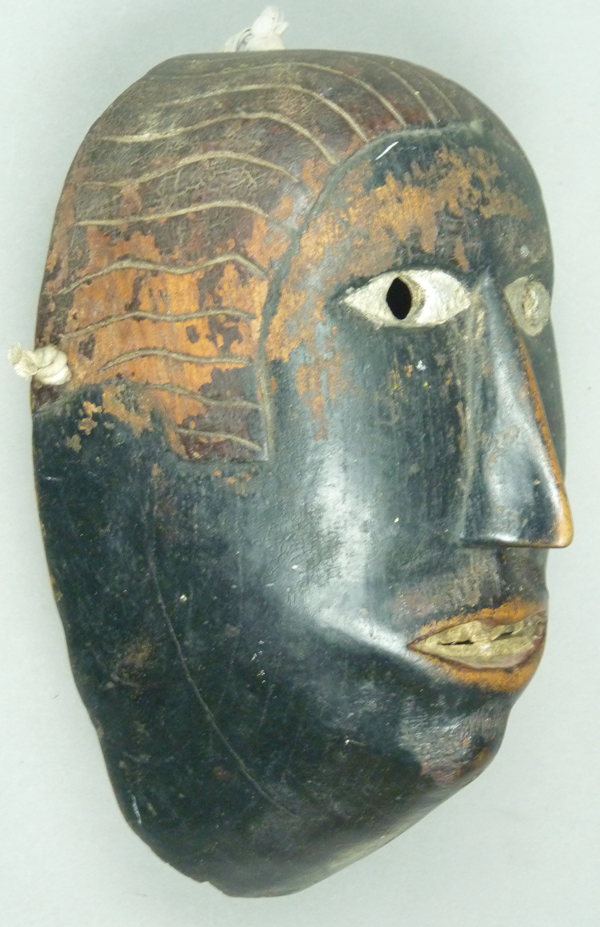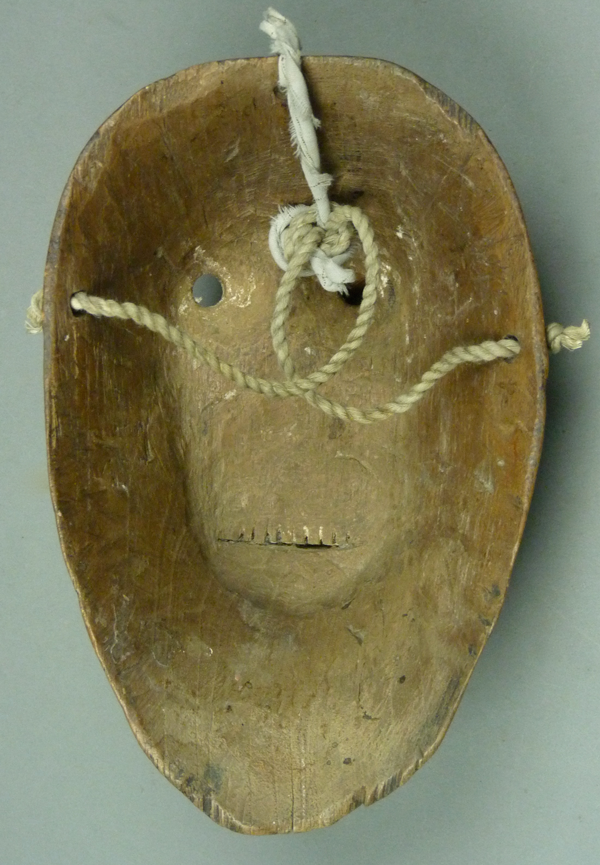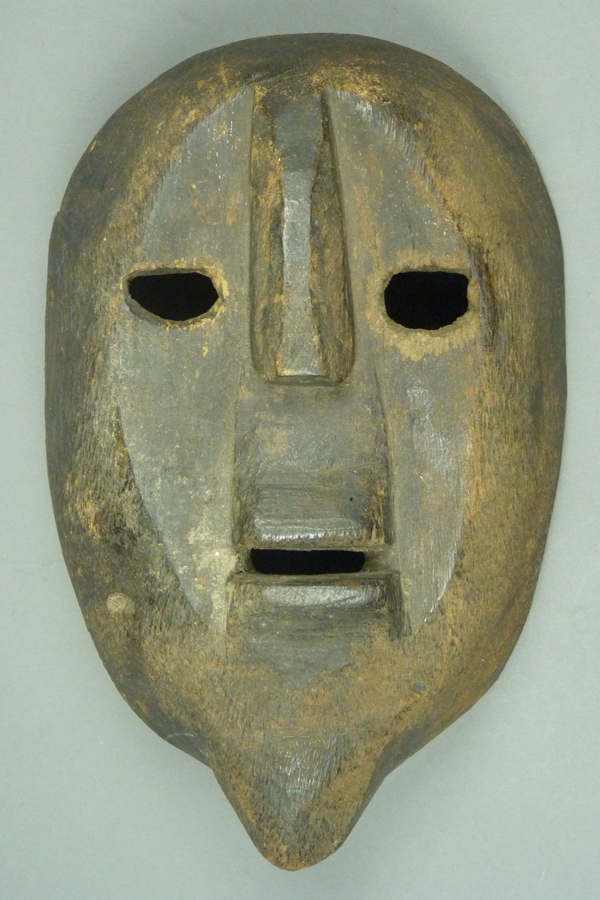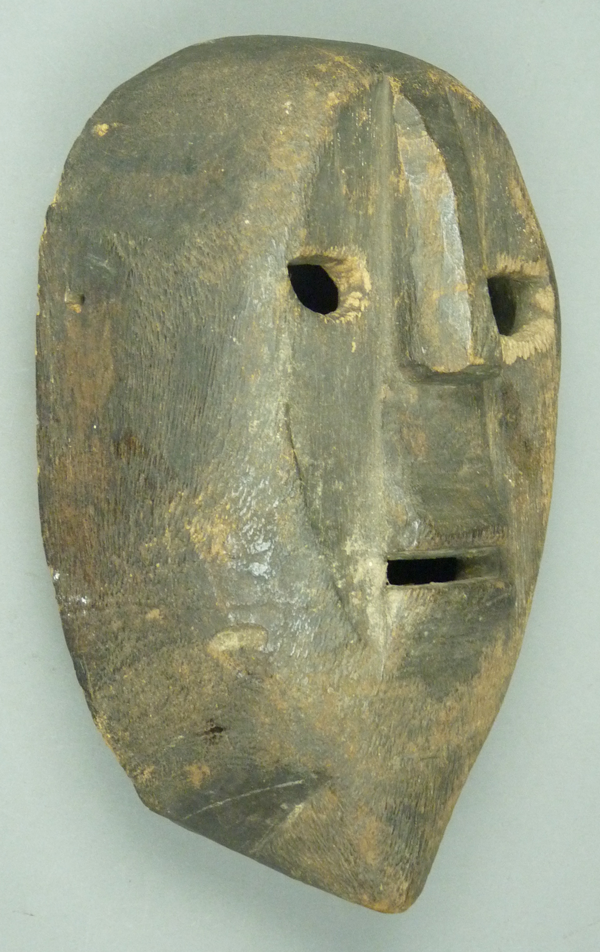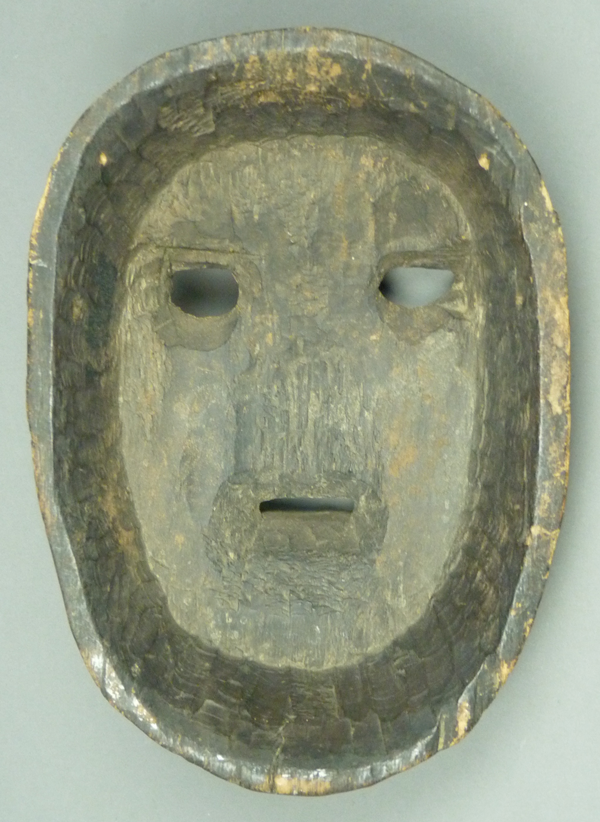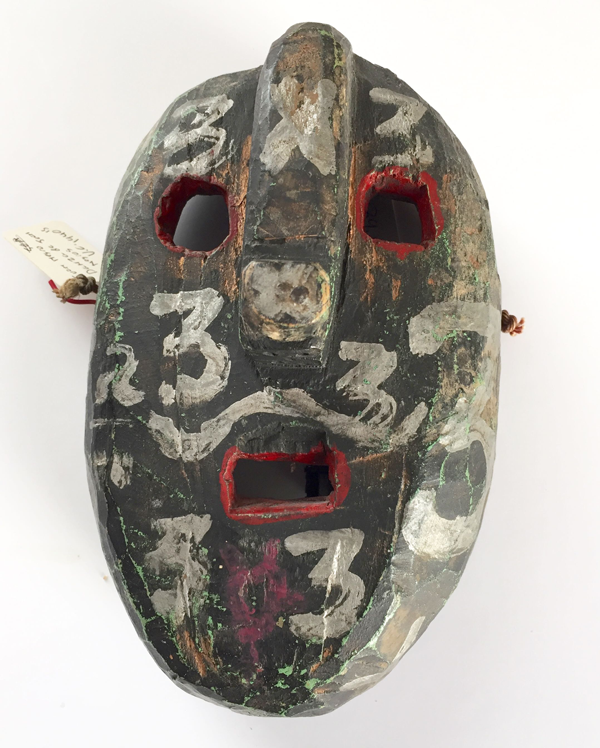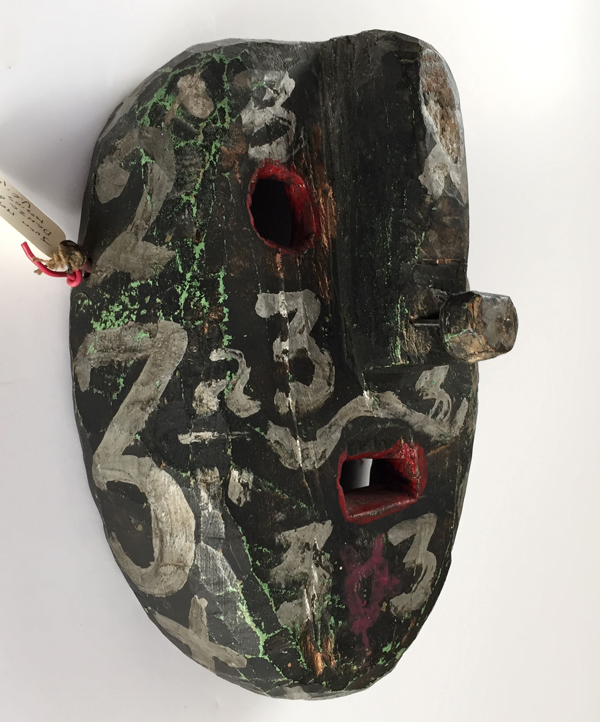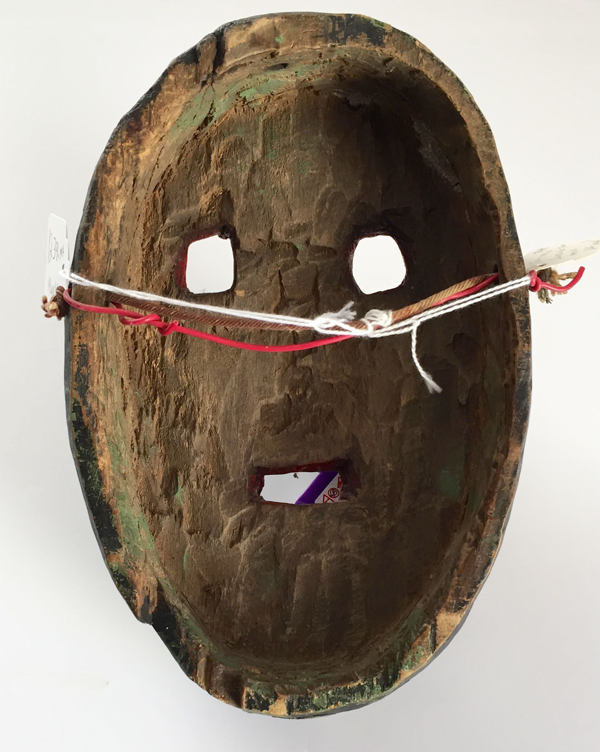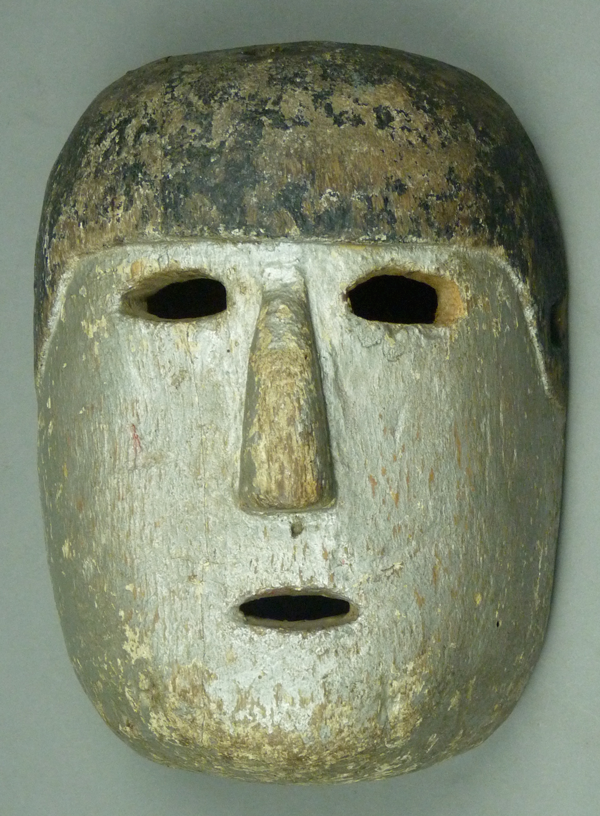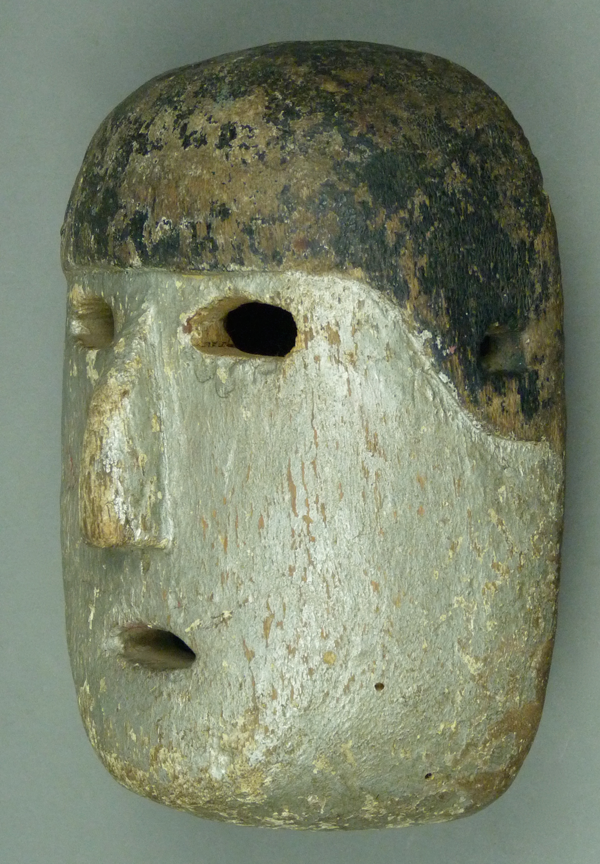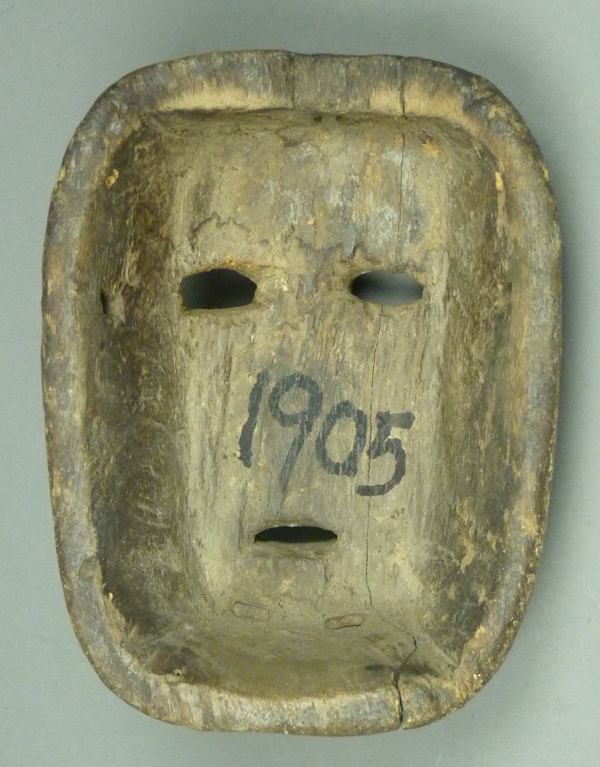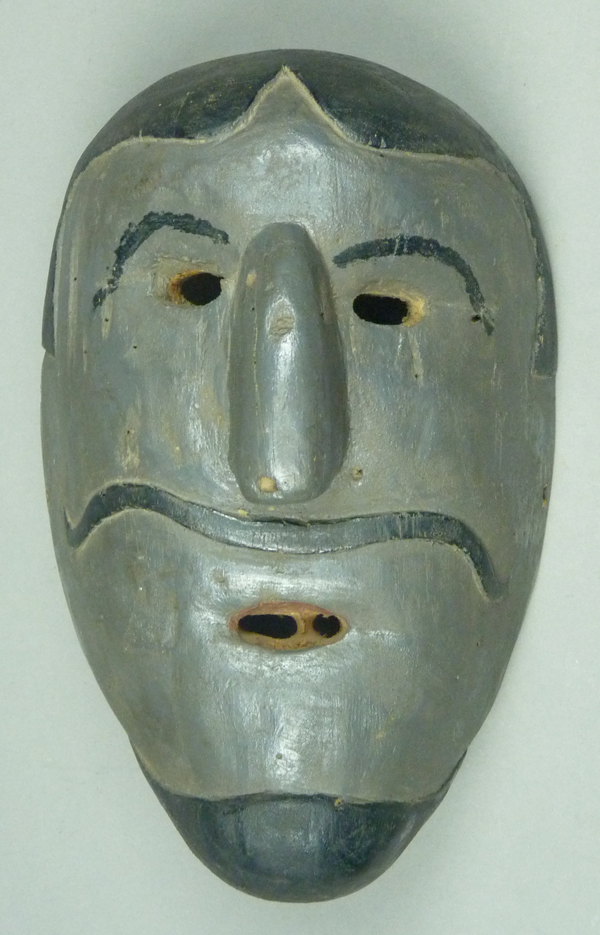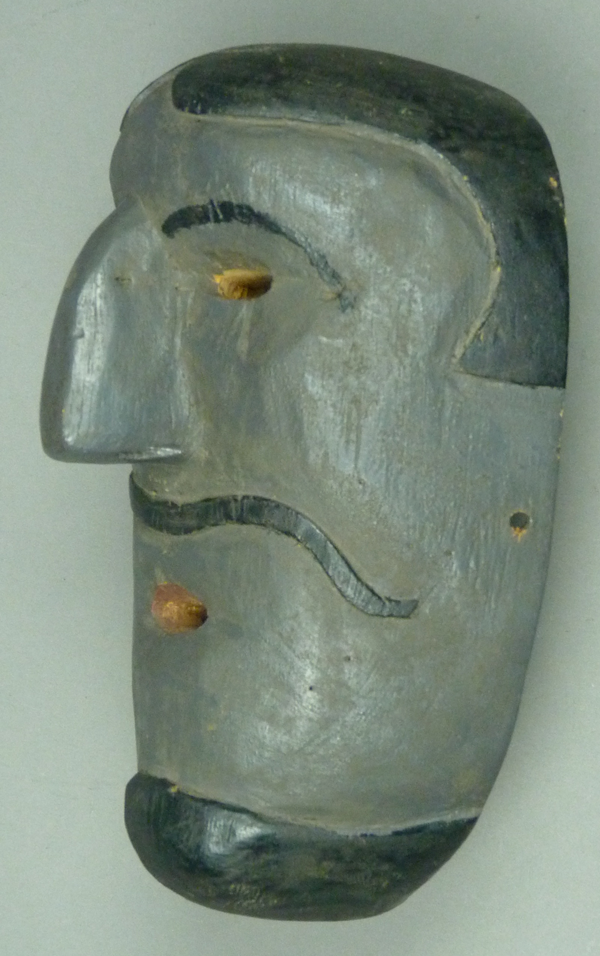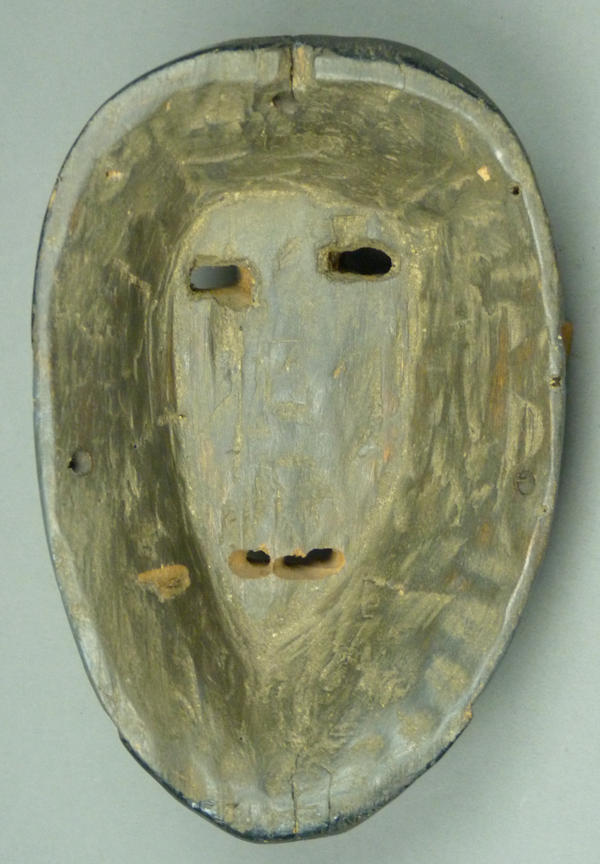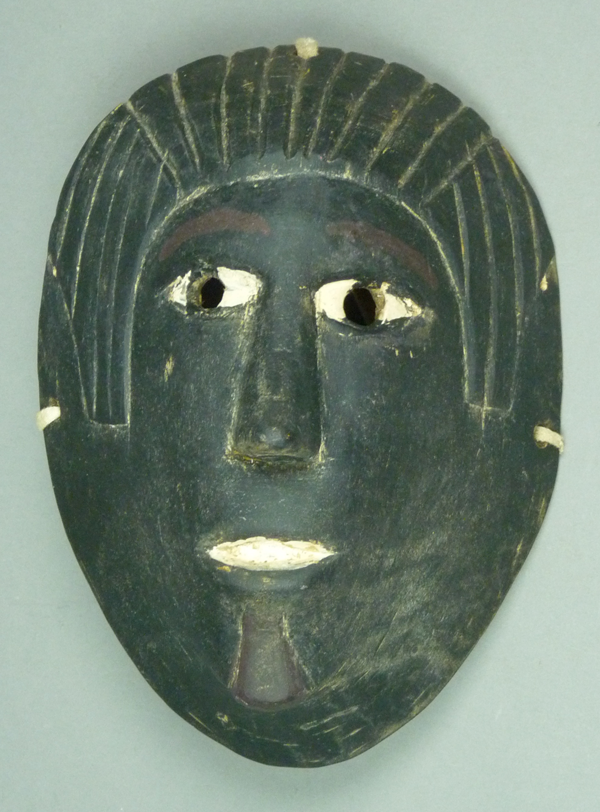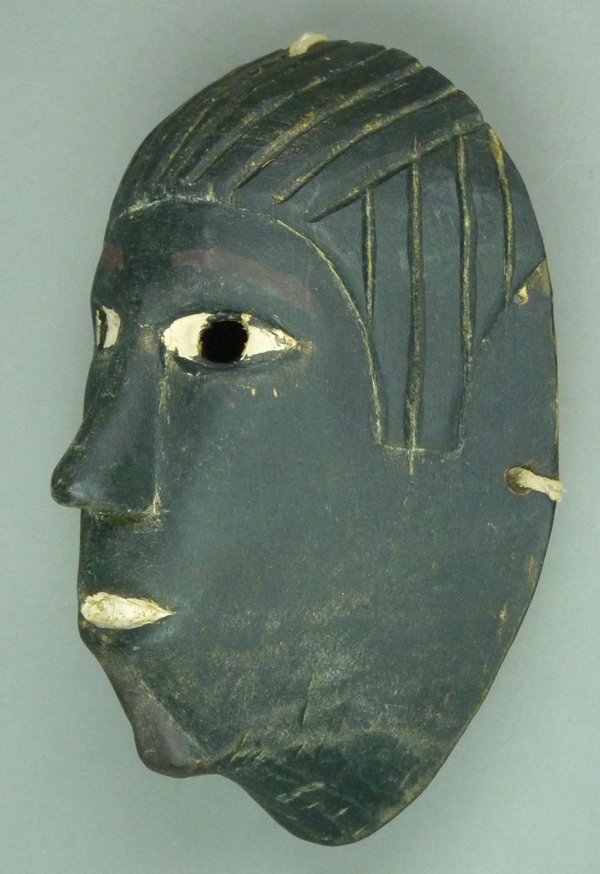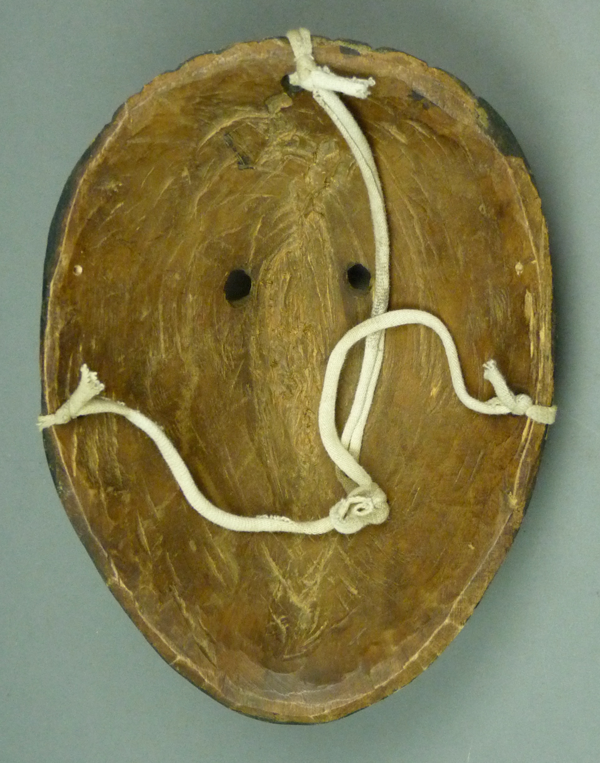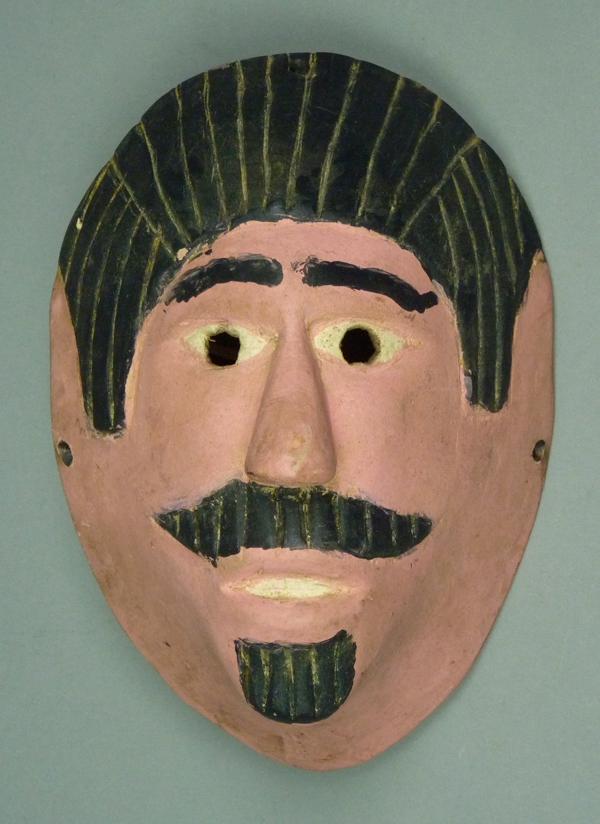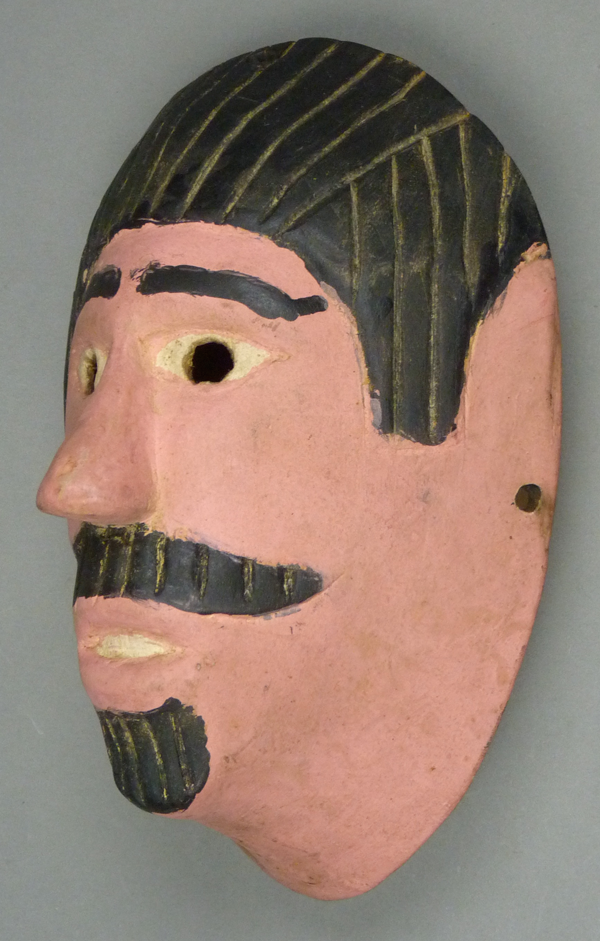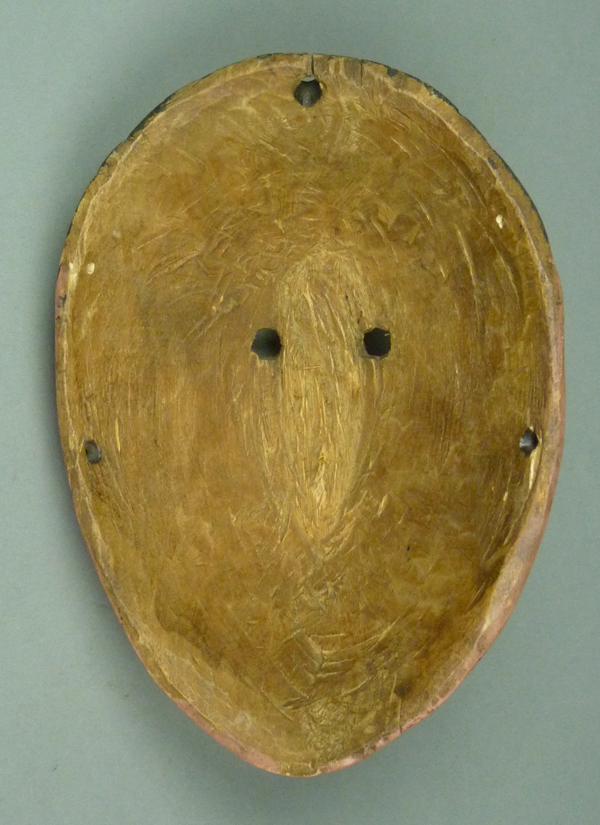In the last two posts you have had the opportunity to see classic Juan Negro and Pañol masks from Veracruz. This week I will present some additional masks from the Juanegro dance in the Mexican states of Hidalgo and Veracruz that demonstrate the unusual and interesting range in their designs. Most of these will be singletons—a Juan Negro without a matching Pañol or vice versa.Here is a link to yet another variant of the Juanegro performance, in Hidalgo. These masks are really different!
https://www.youtube.com/watch?v=SVaKR-vQ6zU
I will begin with a Pañol mask that includes a wonderful new feature.
I have only seen this one, wearing his heart on his chin! Also notice the stylish hairdo—with a sideburn on one side and fuller hair on the other. I bought this mask from Jaled Muyaes and Estela Ogazón in 1999. It was found in the Mexican state of Hidalgo. As you will see, this almond shape is one of the typical Hidalgo styles for Juanegros masks.
The mustache is carved in relief. This mask measures 9½ inches tall, 6¼ inches wide, and 3½ inches deep.
This is a fairly old mask.
Some masks that follow will have this same shape.The next mask is similar in design and shape, but much smaller, as if it was made for a child. I bought this mask from Jaled Muyaes and Estela Ogazón on November 2, 2001. It is from Atlapexco, Hidalgo.
This mask seems solid, but it has these large old holes. Was it made from recycled wood? Apart from the shape, this mask looks a lot like the first two pairs of masks from Veracruz.
This mask is 7¼ inches tall, 4¼ inches wide, and 3¼ inches deep.
There is a typical pattern of differential staining; the back is particularly dark where the dancer’s forehead and chin made contact with the wood.
A WORD OF WARNING—In recent years one finds what appear to be Juanegro mask imitations for sale, for instance on EBay™. If you are considering the purchase of a Juanegro mask, carefully compare the prospective purchase to the masks in these posts.
This next one appears to have been originally carved as another Pañol mask. The first wears his heart on his chin, while this one is red-faced as he declares his love. Or is this blood? I believe that this is a Juanegros mask that was repainted to function as a Xantolo. I bought it from Jaled Muyaes and Estela Ogazón in March of 2001. It is probably from Hidalgo, based on its style.
Apart from the red paint, this mask has the usual features for the Hidalgo style.
It is 9¼ inches tall, 5½ inches wide, and 3¼ inches deep.
The back was originally painted black, so it is the painted surface that is worn from use.
The next mask seems too novel to classify. This is neither the Patrón nor Juan Negro. I suppose that this was worn by Pañol’s competitor for the woman. I bought this from Jaled Muyaes and Estela Ogazón in 1999. This is another mask that looks to be from Hidalgo, but it was collected in nearby Veracruz.
This mask is in the style of the older Coatl Negro masks, although it is not so old.
This mask is 8 inches tall, 5¼ inches wide, and 3¼ inches deep.
There is some wear, indicating that this mask was actually used. According to the inscription on the back, this Cuanegro (Juanegro) mask comes from a place called Dos Puetes (probably misspelled; puentes means bridges) in the Municipio of Huautla, Veracruz. I have not been able to locate Dos Puetes or Dos Puentes, but Huautla is definitely a real place, a town and the county seat for its county.
The next Juan Negro mask has always been one of my favorites, because it seems so old and worn and also so sophisticated in its design. I bought this mask from Dinah Gaston in 2005. It is probably from Veracruz.
Look, for example, at the design of the teeth and tongue. I have such curiosity to see the matching Pañol mask.
The hair on this mask was painted reddish brown. This mask is 7¾ inches tall, 5 inches wide, and 3¼ inches deep.
The upper teeth are cut through on the back, as was the case for the first pair we examined, two weeks ago, but on none of the others. It has a worn back.
Here is a very old Juan Negro mask that seems notably abstract in its design. It is from Tamiahua, Veracruz. I bought it from the Phoenix Gallery in Georgetown, DC, in 1996, and it was collected in the Huasteca by Jaled Muyaes and Estela Ogazón. Asked about a photo of this mask, Jaled said that it was in a typical older style.
This is another box type mask. It lacks any hairline and there is no indication of a mustache, while the lips and beard are abstractly shaped.
This mask is 9½ inches tall, 6½ inches wide, and 3 inches deep.
The back suggests considerable age and use.
I found a YouTube™ video from the village of El Anono in the municipio (county) of Tamiahua Veracruz. There the Juanegros dance is called el Danza de los Candiles (lamps). The dancers wear box type masks with ixtle pigtails like one of the pairs of masks in last week’s post (I was hoping to see more masks like this one).
https://www.youtube.com/watch?v=YAsDRBC6Blw
John Levin sent photos of his favorite Juan Negro mask. It has a similar shape to the last mask, but also there are remarkable differences. The nose has been extended and the number 3 has been repeatedly painted all over the face of the mask. Here is John’s mask.
I think that this could be a Juan Negro mask, but that the layer of green paint under the black surface suggests that it may have originally been a Xantolo mask, a mask representing a dead person for the Day of the Dead fiesta. As I will explain in a future post, one finds Xantolo masks from this area that are painted in various morbid colors such as green, blue, and yellow. Earlier we saw a Pañol mask that was converted to a Xantolo and now we see the opposite.
In the side view one can see the nail holding the button of wood that has been applied to the end of the nose. In another post I will include a Xantolo mask with an even more phallic nose extension; it is otherwise rather different from this one.
This is a mask of the box type that has been danced. The unpainted area on the back is dark from oxidation by the air over a period of decades.
The next is an unusual Pañol mask. It too has an unexpectedly abstract design, like a pre-Columbian stone carving. I bought this one and the next from Jaled Muyaes and Estela Ogazón in 1998; both masks are from Hidalgo.
The severe hairline seems so abstract.
This mask is 7½ inches tall, 5½ inches wide, and 3 inches deep.
If you have read many of my earlier posts, then you will know that this painted number on the back is an indication that this was one of the masks from Jaled and Estela’s collection that was in their 1981 show in Mexico City.
Next comes a more typical Juan Negro mask from Hidalgo.
The mouth opening was formed with a drill.
This mask is 7¾ inches tall, 5¼inches wide, and 3½ inches deep.
The back is worn, but the mouth openings seem freshly drilled.
I will end with a matching pair that resembles, in style, the two sets of mid 20th century masks in the first post of this series (September 21, 2015), but these masks seem less finely carved. I bought these from Jaled Muyaes and Estela Ogazón in 1999; they are also from Hidalgo. Here is the Juan Negro.
Note how the eyebrows and goatee are painted reddish brown.
Also notice the line of the chin. One is reminded of an Egyptian Pharaoh. This mask is 8 inches tall, 6 inches wide, and 3¼ inches deep.
This mask has good age.
Here is Pañol, more or less identical in design.
This mask has suffered a sloppy repainting.
It is 8¼ inches tall, 5¾ inches wide, and 3 inches deep.
Looking at masks that were deliberately made in pairs by the same carver, one can readily see how the maker had a standard design for carving the backs of the masks. This is particularly clear with this pair.
Next week I will show you a set of masks that appears to expand the entire concept of the Juanegros dance.

